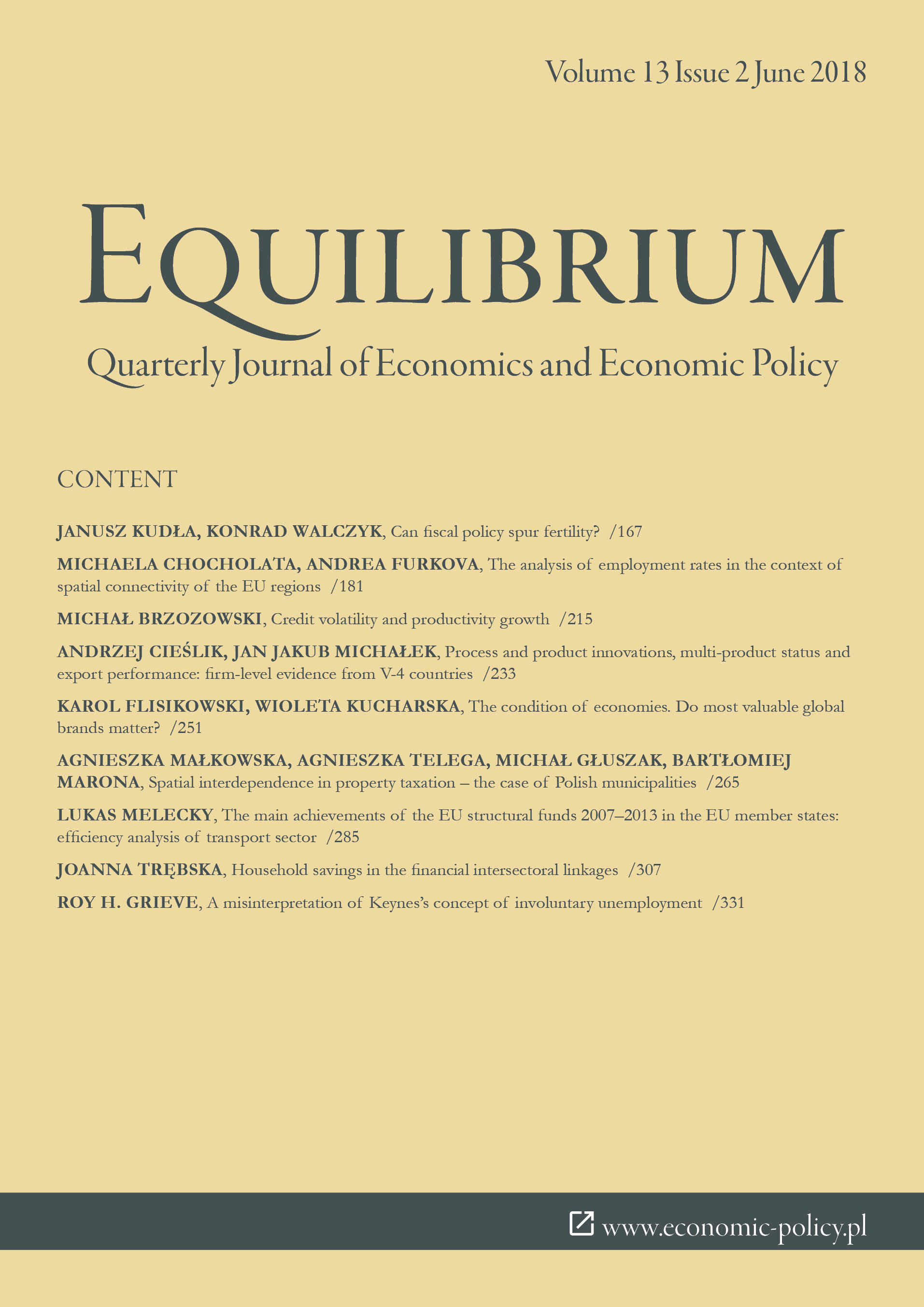Credit volatility and productivity growth
Credit volatility and productivity growth
Author(s): Michał BrzozowskiSubject(s): Economy, Supranational / Global Economy, Financial Markets, ICT Information and Communications Technologies
Published by: Instytut Badań Gospodarczych
Keywords: credit; financial cycle; productivity growth;
Summary/Abstract: The issues of finance-growth nexus and financial instability have attracted considerable attention, but have been studied in isolation. This paper aims at filling this gap by providing insights into the implications of financial instability for long term productivity growth. Purpose of the article: This paper sheds light on the relationship between credit-to-GDP ratio volatility and the total factor productivity (TFP) growth rate. The impact of systemic banking crises and financial depth on productivity growth is also studied. Methods: The System GMM estimation of panel data for over 100 countries and spanning the period of 1970–2009 is used. The decomposition of credit-to-GDP ratio into trend and cyclical component is performed using the Hodrick-Prescott filter and a regression analysis with country-specific intercepts and slopes. The data on TFP comes from the Penn World Tables database. Findings & Value added: TFP growth is negatively affected by credit volatility, mainly in less technologically advanced countries, while financial depth exerts a negative influence on TFP growth in economies with superior technology. Systemic banking crises and the concomitant credit crunches have a negative impact on productivity growth, regardless of the level of technological development. Moreover, the level of human capital, patents and globalization fuel productivity growth. Macroeconomic instability, measured by the rate of inflation, hampers TFP growth.
Journal: Equilibrium. Quarterly Journal of Economics and Economic Policy
- Issue Year: 13/2018
- Issue No: 2
- Page Range: 215-232
- Page Count: 18
- Language: English

